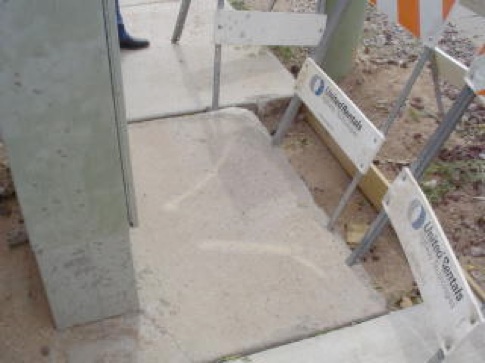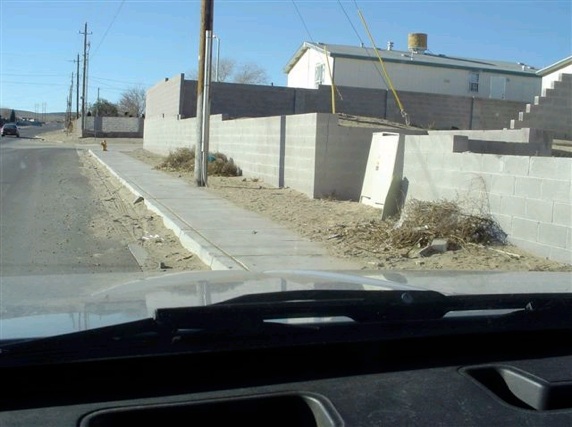The access requirements of the Americans with Disabilities Act (“ADA”) require a public entity to “operate each service, program, or activity so that the service, program or activity, when viewed in its entirety, is readily accessible to and usable by individuals with disabilities.”
Specifically the proponents of ADA have requested that cities install curb ramps and remove obstacles that narrow the pedestrian right of ways to less than 32 inches. Echoing telephone company claims the “no product exists to replace the above grade cabinets” most cities have simply not forced the phone companies to act to move these obstacles. Often time, cities that have tried to comply with ADA requests have, as pictured above, had to add concrete aprons to have any pedestrian access at all.


In June of 2005 the United State Supreme Court handed down a decision that will affect every city and every telephone company in the United States. That case is known as the “Barden Case.”
In Barden vs. City of Sacramento (292 Fed. 3rd 1073), the City of Sacramento claimed that the city sidewalks did not constitute an “activity” as defined by the ADA. Over 230 US cities joined Sacramento in supporting this position. In rejecting the city’s arguments, the Supreme Court agreed with the Ninth Circuit Court of Appeals that maintaining public sidewalks is a normal function of a “city” and the ADA requirement for curb ramps and accessibility apply.
When the US Supreme Court rejected the City of Sacramento’s appeal, the Barden case became the law of the land. Any object on a city sidewalk that constitutes a “barrier” whether placed there by the city or a third party entity will have to be removed. Specifically cited in the court’s opinion as “third party entities” were transit companies and utility companies including their fixtures and equipment.
All US cities will need to immediately address their building codes and ordinances to insure that all new developments include curb ramps and prevent the placement of obstacles on sidewalks. In addition and more importantly, the cities will need to survey their existing streets and sidewalks to insure that curb ramps are being installed and obstacles are being removed from city sidewalks in an orderly and continuous fashion. This will entail meeting with telephone and other utility companies, transportation companies and others who place obstacles on your city sidewalks to ensure that they fully appreciate the magnitude of the Barden decision and that they are advised of their obligations to comply with the ADA requirements.
Our telecommunications system is critical to our country’s ability to respond to acts of terrorism. The Department of Homeland Security has recognized this fact and through the Directorate of Information Analysis and Infrastructure Protection has established an agency that is responsible to identify and assess current and future threats to our Nation’s “Infrastructure.” That infrastructure includes food, water, agriculture, health, emergency services, energy, transportation, and our information and telecommunication networks.


The existing networks of above grade telecommunications cabinets make our entire information and telecommunication networks vulnerable to terrorist attack. The cabinets are easily visible, readily accessible and highly vulnerable. The cabinets can be easily and quickly destroyed and a systematic attack on the communication grid of a city could easily “blind” cities’ first responders from responding to acts of terrorism. Pictured above is an above grade cabinet that was intentionally destroyed by a vehicle. The damage, while minimal to the vehicle, was obviously catastrophic to the cabinet. Over 1000 customers lost phone service as a result of this intentional act.